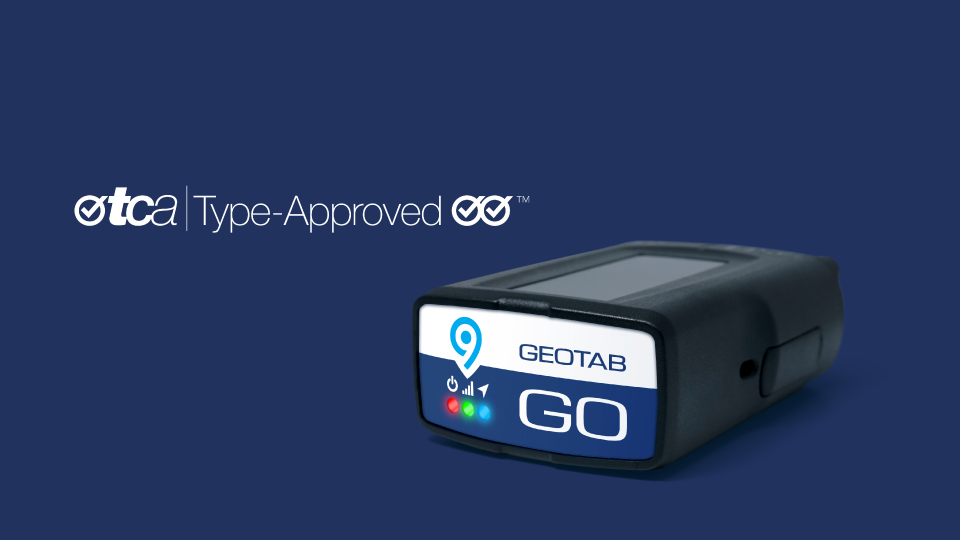How to track off-road fleet equipment
Off-road tracking benefits and which types of metrics you should track.
By Geotab Team
August 28, 2024
•4 minute read

Many companies face challenges integrating and managing their data assets. When you’re a fleet with mixed equipment and vehicles, it can be even more complex. Using a telematics platform that supports both over-the-road trucks and off-road equipment together makes the process easier.
Selecting the best telematics device for off-road applications
Choosing the right device for off-road vehicles is imperative for accurate data collection. Rough conditions on job sites require a different type of telematics unit, one that is protected against impact and moisture, dirt, or even ice.
The Geotab GO RUGGED is a telematics device specially designed for heavy equipment, farm machinery, powered trailers and other assets operating in harsh conditions. A ruggedised telematics device is recommended for fleets in industries such as construction and engineering, agriculture, oil and gas, utilities, and mining.
Similar to the Geotab GO device, fleets can install the GO RUGGED into the equipment’s engine diagnostic port (if one exists), or by hardwiring it directly to the asset’s battery. For best results, the GO RUGGED device should be fastened securely and mounted in a location with minimal obstruction of view to the sky. Watch a video on how to install GO RUGGED here.
Benefits of tracking off-road equipment
Combining off-road vehicle data is essential for proper analysis and drawing insights. Fleets can integrate and manage both types of assets in one interface — MyGeotab.
The benefits of fleet tracking are numerous. Beginning with making it easier to track and manage assets, fleets can also leverage a telematics platform for cost management, efficiency and even target driver safety or compliance. One advantage of Geotab’s off-road solution is that it allows a fleet to bring in different types of apps that will allow them to customise the data gathered and viewed.
Geotab can incorporate API feeds from OEMs, so fleets can put together the telematics package that will best suit their needs. Think of it as an app store for your telematics solution.
Types of off-road fleet metrics
While different types of off-road fleets may need to track metrics specific to their industries, there are some tracking they may share. Here are some data points that all off-road fleets may wish to track.
Logistics — Having a complete view of where equipment assets are along with the trucks that move them allows for the most efficient way of scheduling their pick-ups and deliveries. This will also give the dispatchers/service manager the ability to see their on-road technicians on the same map for scheduling maintenance/repair calls.
Utilisation — Being able to monitor the usage of equipment on site allows for the proper allocation of assets to each job based on work being done.
Asset allocation — This also allows the company as a whole to see what assets they need and base their purchasing budget on actual and accurate usage data.
Maintenance & repair schedules — Maintenance programs are generally in programs companies already have, but telematics can populate them with data from the equipment.
Reduce theft — By tracking a machine’s location, using geofencing and getting alerts when a device is crippled, fleets can keep track of where their assets are and if they are moving without consent.
Reduce fuel consumption — Monitor idling and machine usage to determine how to save fuel.
Insurance premiums — Insurance companies will sometimes give discounts to customers taking advantage of telematics.
Job estimates — With the data to support exactly how much equipment is used, a fleet can more accurately bid jobs.
Construction, like a lot of industries, uses per-hour figures to create job quotes. Knowing the usage will allow them to properly estimate the job and not overbid, which can lose jobs.
Manage operating expenses — Knowing how much their equipment is used, transported and maintained allows companies to adjust their budgets accordingly and cut fuel and other costs.
Improve productivity — Improving logistics, utilisation and maintenance will boost productivity.
Use cases for off-road fleet tracking
Let’s look at some examples of off-road fleet tracking.
- Construction
A construction company needs to know how many hours its equipment is running in order to optimise equipment utilisation at each worksite. Construction fleets need to track information such as:
- Is too much equipment on site?
- Is not enough equipment on site?
- Is one machine doing too much work compared to others?
- Is a machine sitting idle too long?
For example, if a fleet has three backhoes on one job site and two of them are being utilised four hours a day, but the third is only being utilised two hours a week, then there is too much equipment at this job site. The third backhoe should be moved to a different job site where it can be better utilised. Being able to collect and interpret this type of data can go a long way toward better management of operating costs.
2. Oil, gas and mining
Similar to a construction fleet, off-road fleets involved in oil, gas mining may have equipment that they move from one site to another. These fleets will want to track how much time a vehicle is at a particular site so they can bill hours of usage to that particular job site. This will allow them to keep track of how much revenue they are generating at each site.
3. OEM
Aerial equipment manufacturers, generator and compressor manufacturers and other smaller manufacturers may not have proprietary telematics solutions. Geotab will work with these OEM to install telematics on their equipment during the manufacturing process, so they can provide a factory-installed option.
4. Rental
Rental fleets need to be able to track vehicles so they can charge their clients appropriately for the amount of use the equipment sees during the rental period.
In the past, rental contracts were written for a day of service, which is typically eight hours. However, the renter may have used the vehicle for 12 hours, so the rental company had to issue an over-bill for the additional use.
Vehicle tracking through telematics will enable a rental fleet to track vehicle operation, and bill the rental client for the actual hours the vehicle was used, rather than a flat daily fee.
To learn more about your off-road telematics options, request a demo today.
The Geotab Team write about company news.
Related posts


Telstra 3G Shutdown Extension gives Fleet Managers more Time to Upgrade
May 10, 2024
2 minute read

Revolutionising fleet connectivity: The transformative impact of 5G as 3G networks bow out
March 20, 2024
3 minute read



